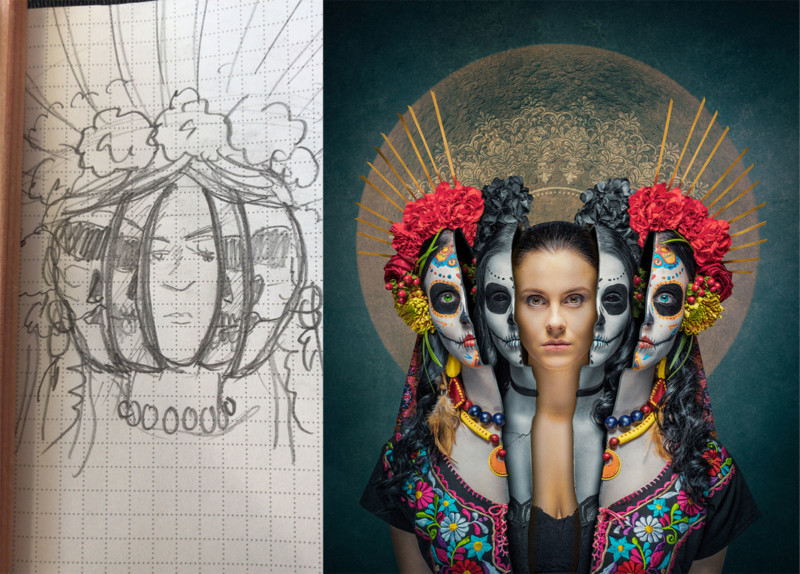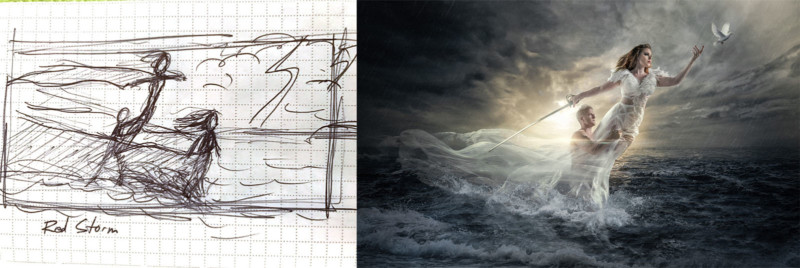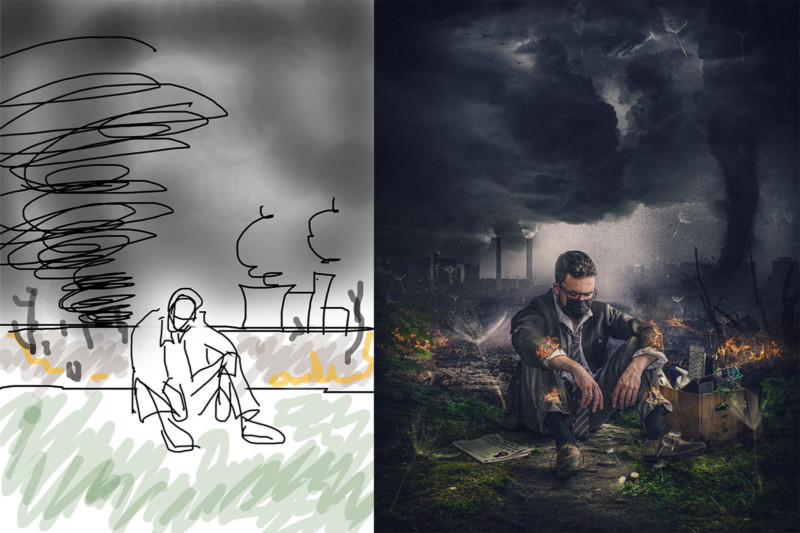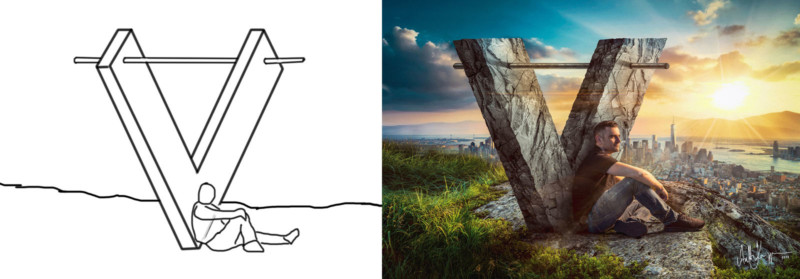How I Bring My Sketches to Life as Conceptual Photo Art

For a digital artist like me, getting those unique ideas for my images is one of the most important things. I see the ideas in my dreams, when I read a magazine, when I’m out for a walk, or pretty much anywhere. I have learned that ideas are everywhere if you just allow yourself to see them.
When I get the idea, I see it in my head as a “flash”. I see pretty much every detail, but I need to sketch out that idea quickly into my notebook so I don’t forget it.
These sketches work as a guide when I start doing the image itself. When I look at the sketch, I’m able to remember all the aspects of the image I saw in my head. Of course, every image has a different process when I start putting all the pieces together, but that is another story.
Below you can see a bunch of my sketches from the small notebook I carry pretty much everywhere. There are always some tweaks to the concept or the image itself, but many times my sketch and final image almost are one to one match as you can see.








In my notebook, there are many more similar sketches just waiting for their time to be created as a final image.
So how do I come up with these ideas? Here are 5 tips on how you can create your own original conceptual art.
#1. Sketch Out Your Ideas as Soon as Possible

When you sketch the idea, even with the crappy stick figures, you are able to previsualize your image and you will remember it better when you come back to it. So keep that notebook available at all times. I use a small Moleskine notebook that usually is in my bag, where I dribble my tiny sketches. And when the time is right I breathe those sketches into reality.
#2. Allow Yourself to See New Concepts, Steal Like an Artist

Years back after reading a book called Steal Like an Artist by Austin Kleon, everything changed with me how I create new concepts. When you allow yourself to steal (not copy) ideas all around you are able to combine those multiple ideas into one unified new concept. So don’t copy someone’s image or idea but rather save some parts of it and combine it with some other idea.
#3. Add Randomness to Your Thought Process
When creating new concepts for your images try not to research things that you know. Try to research things that you don’t know. For example, I have often used Wikipedia’s Random Article button to expose myself to new articles and visuals that I’m not definitely looking for. These random articles might initiate something new for your thought process and you might come up with a new unique concept.

#4. Random Word Generator
You can also use a Random Word Generator to create, say, 3 totally random words and try to imagine those words as an image in your head. I would recommend you to use 3 words and then try to visualize those words as a new conceptual image. This will be a fun exercise for any artist.
ABSTRACT, FUR, MACHINERY.
Now try to see that image in your head. I’m definitely getting some weird images in my head. Maybe a new concept is born yet again?

#5. Creativity Needs Time
I often heard the argument that “I don’t have time to create anything new.” Well, we all have the same hours to spend during the day. The older we get the more excuses we just have to NOT be creative. Give a child a cardboard box and they will turn it into a car or even a space rocket. We are just too lazy to see creativity around us.
If you want to create unique concepts and do conceptual images, you need to invest time. And yes I know that time is our most precious thing, but if you allocate the time of a single Netflix episode to creativity, I’m sure you will create a new unique concept also.
Invest that time in reading random articles, going out, and trying to see those unique concepts all around you. Write them all down, previsualize them, and then when the time is right put your energy creating those visions into reality. Do the work!
About the author: Antti Karppinen is a photographer, digital artist, and retoucher based in Finland. He is an internationally award-winning commercial and portrait photographer. You can find more of his work over on his website and blog. This article was also published here.